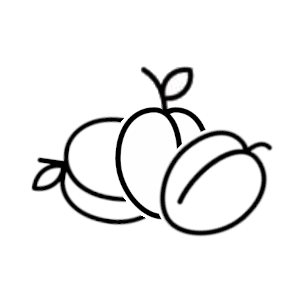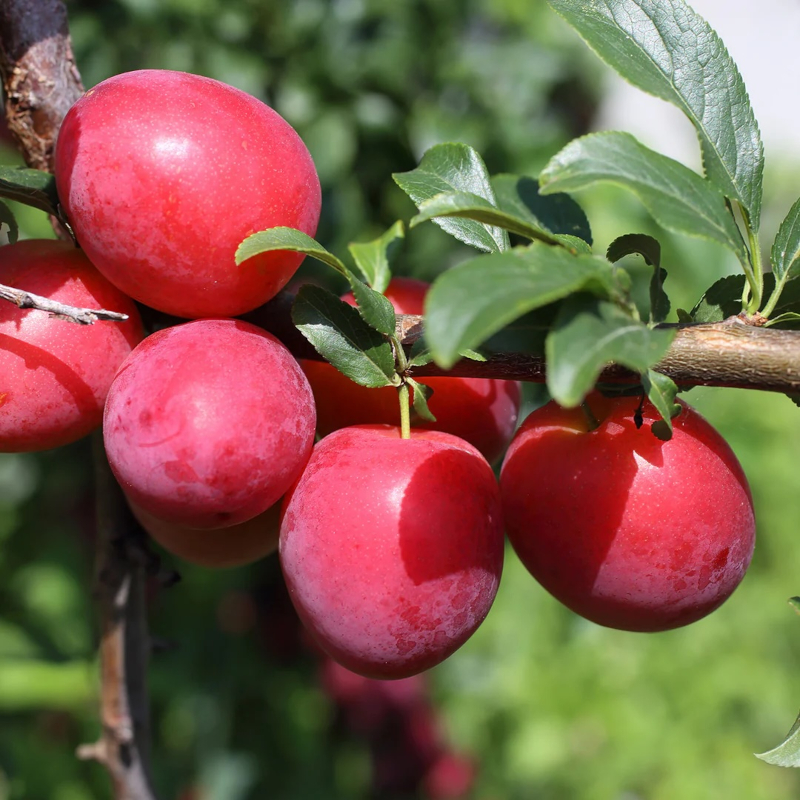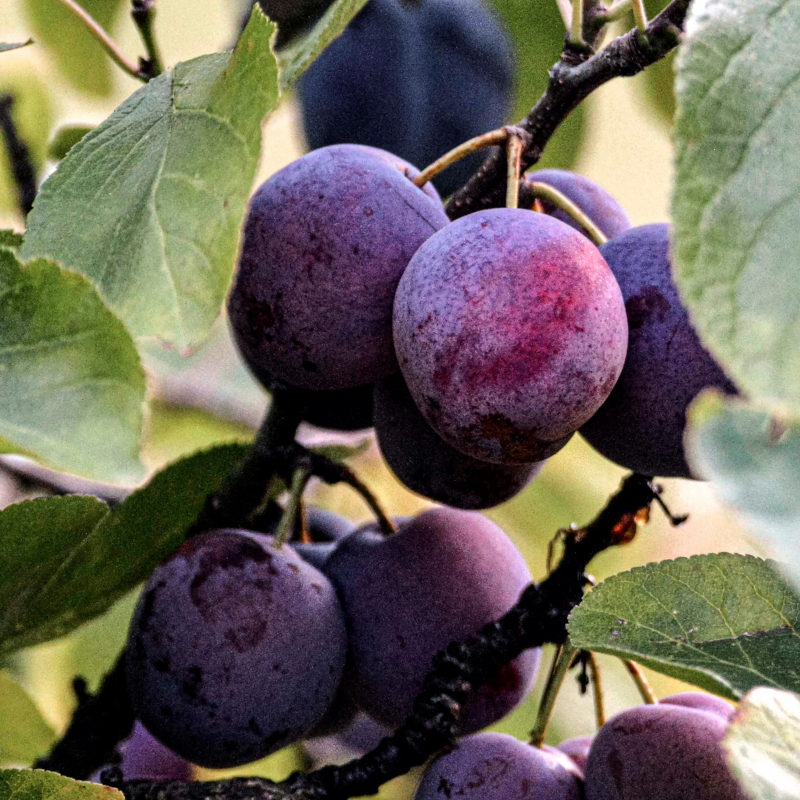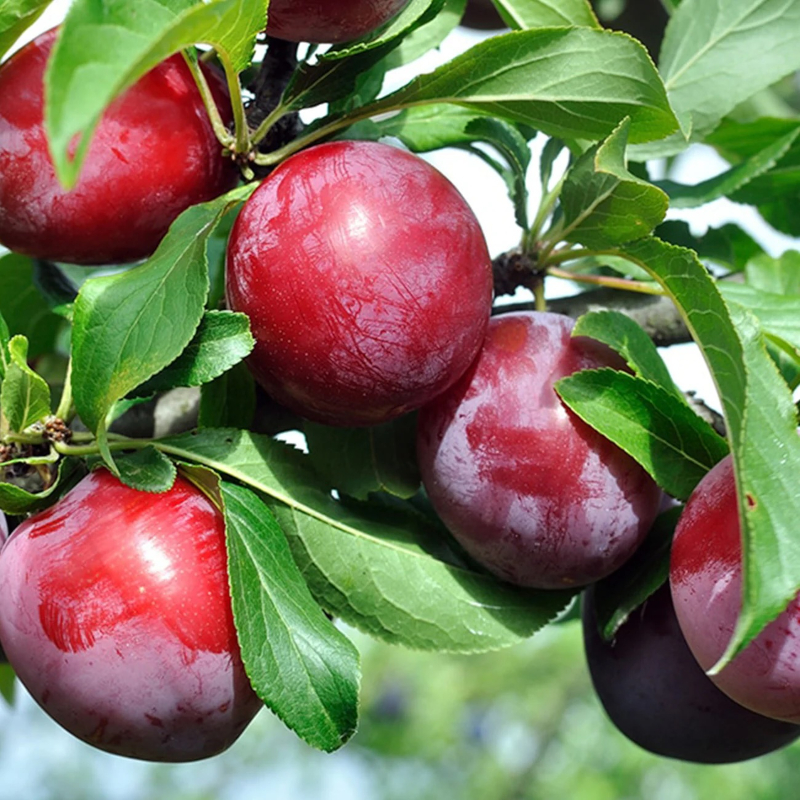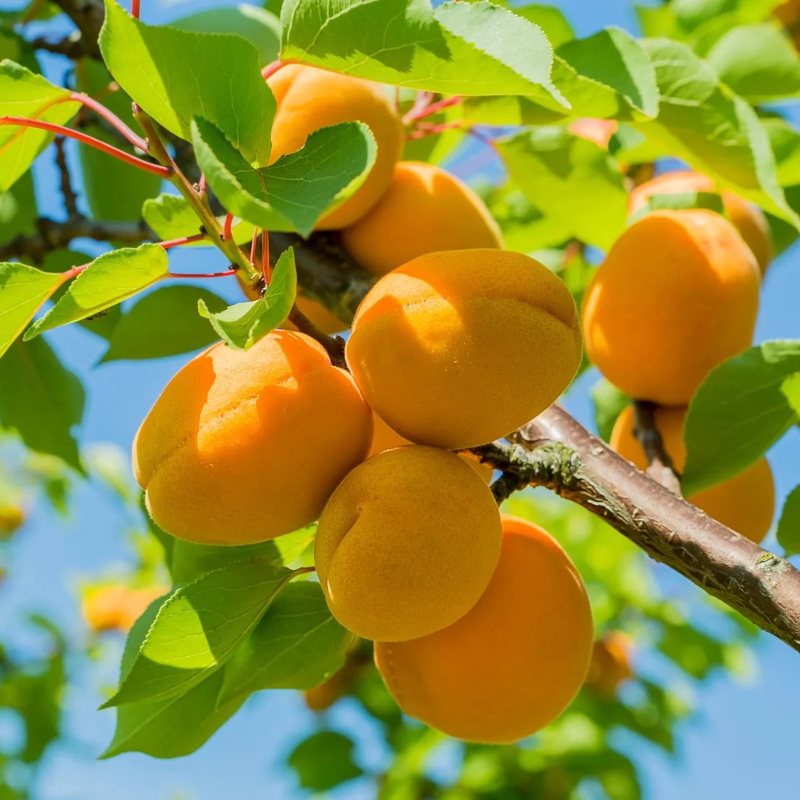How To
Grow
Plum Tree
Choose the right variety
Select a variety suitable for your local climate (chill hours, altitude, etc.)
Common types: Santa Rosa, Methley, Shiro, Satsuma, Damson
Choose self-pollinating or plan for cross-pollination with another compatible plum variety
Select a good location
Sunlight: Full sun (at least 6–8 hours/day)
Soil: Well-draining loamy soil with pH 5.5–6.5
Spacing: 4–6 meters apart for standard trees; 2–3 meters for dwarf types
Planting
Best planted in late winter or early spring, while the tree is still dormant
Dig a hole twice as wide and just as deep as the root ball
Mix compost or well-rotted manure into the soil
Place the tree so the graft union is above the soil level
Fill and firm the soil gently; water deeply
Watering
Water regularly during the first year
Once established, water deeply every 1–2 weeks during dry periods
Fertilizing
Apply balanced fertilizer (e.g. 10-10-10 NPK) in early spring before new growth
Avoid over-fertilizing—too much nitrogen reduces fruiting
Pruning
Prune in late winter to shape the tree and improve air circulation
Remove dead, diseased, or crossing branches
Pollination
Some varieties need a second plum tree nearby for pollination
Bees are main pollinators—avoid pesticides during flowering
Pest & disease management
Watch for aphids, plum curculio, mites, and fungal diseases
Use neem oil or organic sprays if needed
Harvesting
Plums are usually ready in mid to late summer.
Pick when the fruit is soft to the touch and fully colored.
Health Benefits of Plum
- Contains polyphenols that help reduce inflammation and protect cells from damage
- High in dietary fiber and sorbitol, aiding in bowel regularity and preventing constipation
- Low glycemic index; helps manage blood sugar levels
- Potassium in plums supports healthy blood pressure and heart function
- Some studies suggest plums may help increase bone density due to vitamin K and phenolic compounds
- Contains vitamin C, which enhances immune defense
- Vitamin C and antioxidants promote collagen formation and reduce skin aging
| Nutrient | Amount / Raw Plum (100Gr) |
| Calories | 46 kcal |
| Protein | 0.7 g |
| Total Fat | 0.3 g |
| Carbohydrates | 11.4 g |
| – Sugars | 9.9 g |
| – Dietary Fiber | 1.4 g |
| Vitamin C | 9.5 mg (11% DV) |
| Vitamin A | 17 µg (2% DV) |
| Potassium | 157 mg (3% DV) |
| Vitamin K | 6.4 µg (5% DV) |
| Vitamin B6 | 0.03 mg (2% DV) |
| Magnesium | 7 mg (2% DV) |
| Calcium | 6 mg (<1% DV) |
| Iron | 0.2 mg (1% DV) |
| • DV = Daily Value, based on a 2,000-calorie diet. | |
Various Uses of Plum
Eat fresh or raw
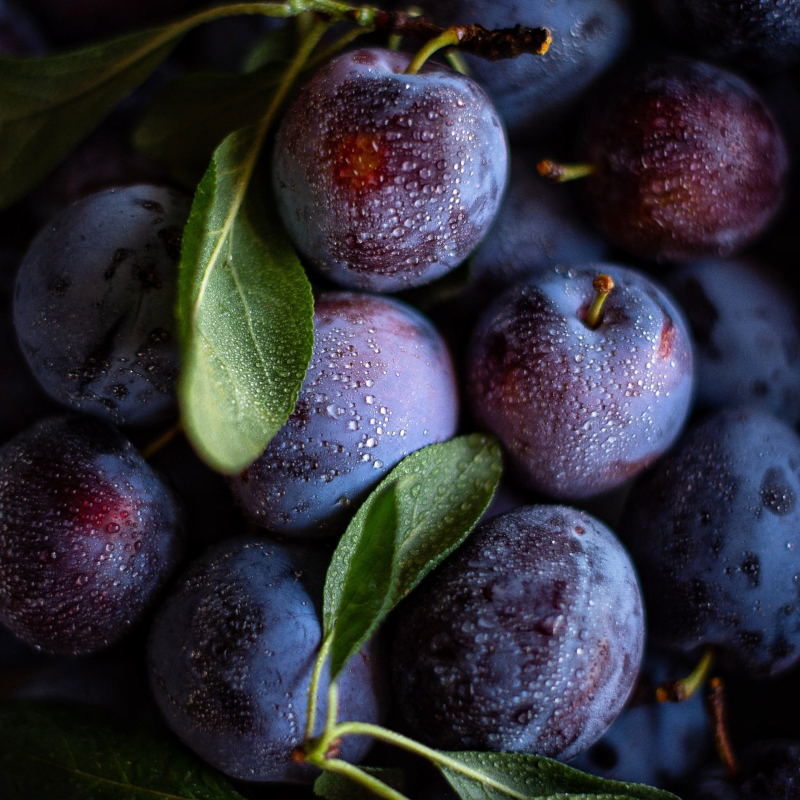
Enjoy as a snack or sliced in fruit salads
Baking
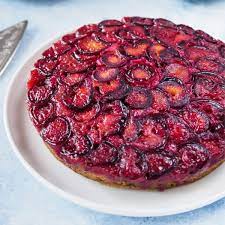
Used in pies, tarts, cobblers, crumbles, muffins, and cakes
Sauces & Chutneys
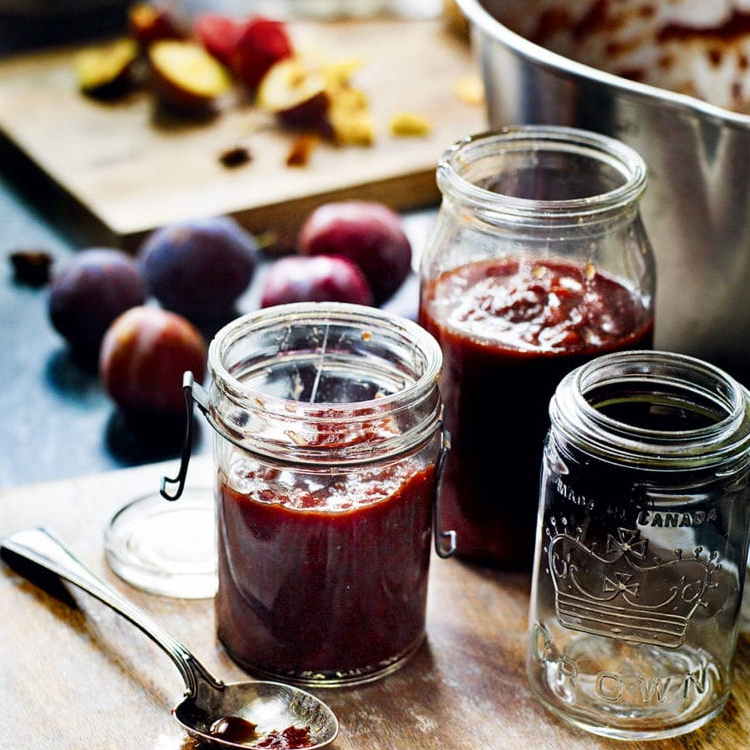
Made into savory plum sauce or chutney for meats like pork, duck, or chicken
Fermented Drinks
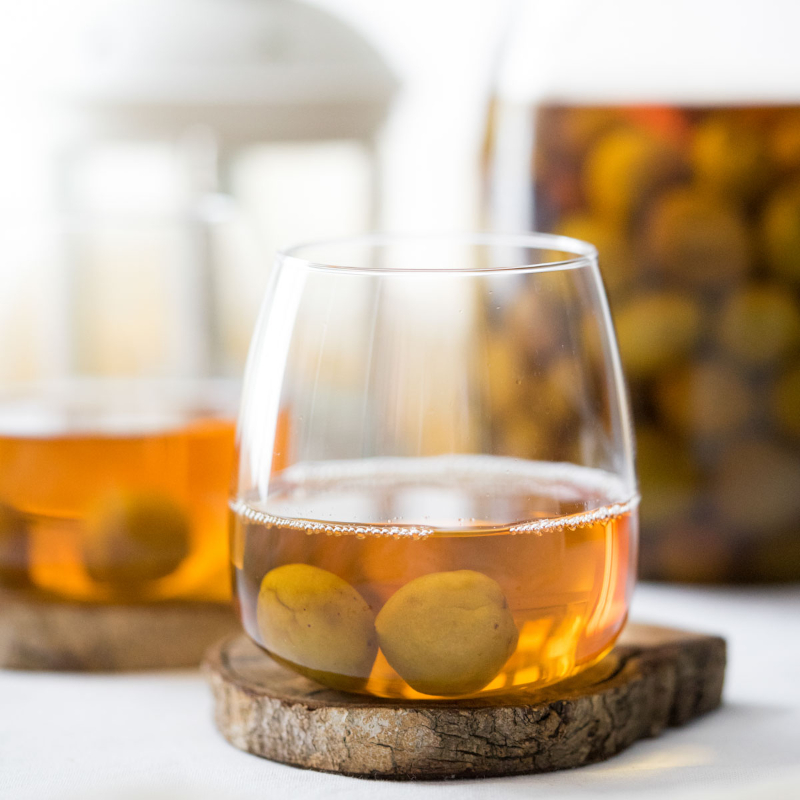
Used to make traditional plum wine, umeboshi (Japanese salted plums), or vinegar
Preservation
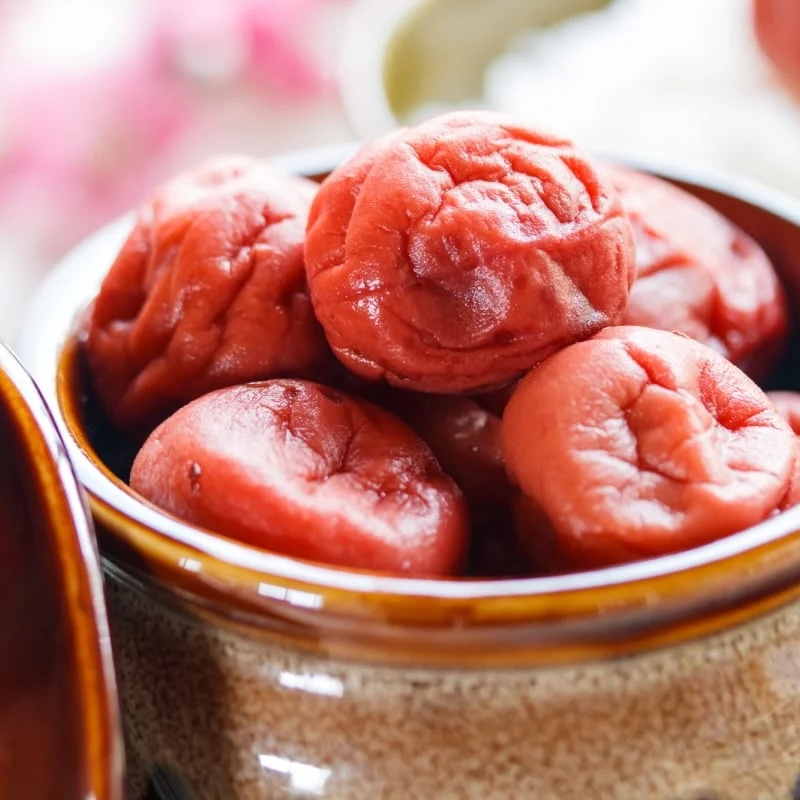
Jam and Jelly, cooked into rich, flavorful spreads with natural sweetness and tartness
Dried as Prunes, popular for digestive health and snacking.
Uses Of
Tree Trunk
Firewood
Excellent Firewood: Burns slowly with a pleasant aroma and good heat output.
Produces minimal creosote
Good for wood stoves and fireplaces
Woodworking & crafts
Fine Woodturning: Plum wood is dense, hard, and has beautiful reddish to purplish grain patterns, making it ideal for:
Inlay work and musical instruments
Decorative bowls, pens, knife handles
Small furniture parts
Smoking Wood
Flavorful for Smoking Meat: Dried plum wood imparts a mild, sweet flavor to:
Pork, Poultry, Fish and game meat
Natural Fencing or Stakes
Small trunks or large branches can be used as:
Garden stakes or trellising supports
Fence posts


